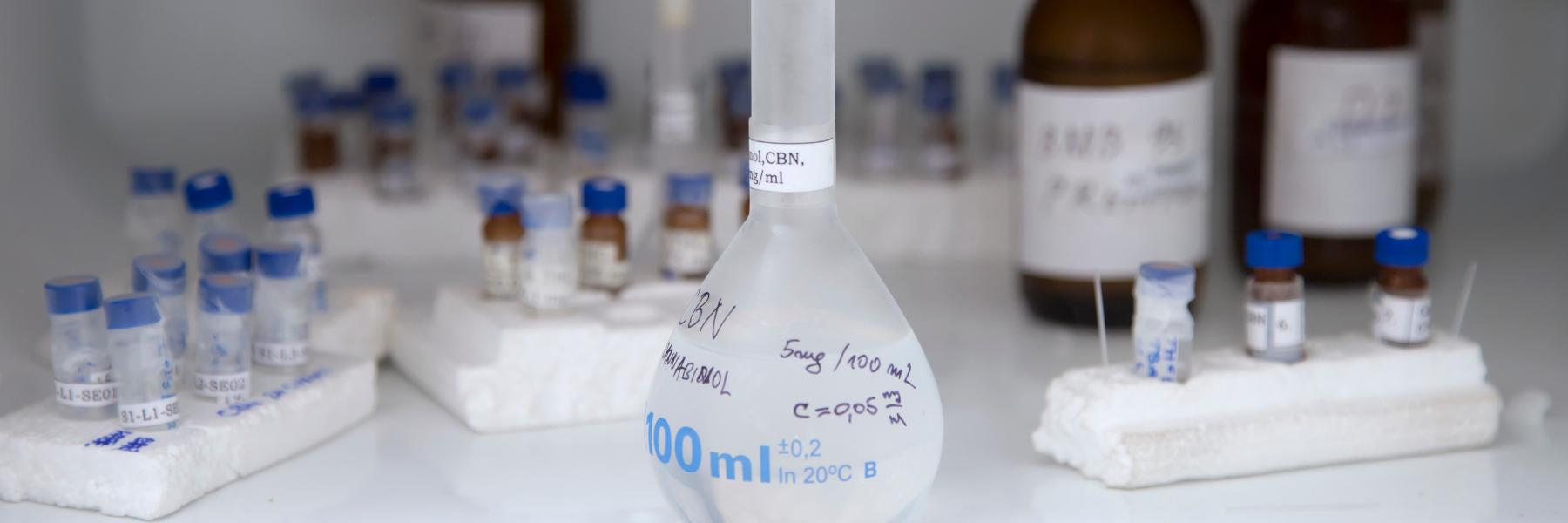Best Practices for Safe Chemical Storage in Laboratories
Safe chemical storage has an important role to play in educational and research environments. The correct storage practice protects students, staff, and facilities while supporting laboratory operations and compliance with safety standards.
In modern laboratories, where diverse chemicals support a number of experiments and teaching activities, implementing adequate storage systems provides the foundation for safe, productive research and learning spaces. This guide covers essential storage principles, from proper organisation and equipment needs to environmental controls and safety protocols.
Why Is Proper Chemical Storage Important?
In educational settings, where multiple users access laboratory spaces, organised storage systems create clear protocols that support safety and learning. Poor chemical storage poses potentially major risks to laboratory users and facilities. Incompatible chemicals stored together can react violently, creating fire hazards or releasing dangerous fumes.
Improper storage conditions might also compromise chemical integrity, affecting research results. Storage protocols exist to protect expensive materials from degradation and prevent contamination that could impact experimental outcomes.
What Are the Basic Principles of Chemical Storage?
Chemical storage follows key principles that protect both materials and laboratory users. Segregation prevents incompatible chemicals from coming into contact, while containment systems minimise spill risks.
Chemical segregation requires careful planning that includes keeping:
- Acids separate from bases.
- Oxidisers away from flammables.
- Organic compounds isolated from inorganic materials.
- Water-reactive chemicals in waterproof storage.
- Temperature-sensitive materials in controlled environments.
How Should You Organise Your Chemical Storage?
Chemical organisation that’s effective starts with clear classification systems. Storage groups separate materials based on reactivity, compatibility, and handling requirements. Modern storage systems use colour coding and clear labelling to support safe access and professional material handling.
Storage areas need:
- Clear identification systems.
- Organised inventory controls.
- Regular access logs.
- Updated safety information.
- Spacing between incompatible materials.
What Storage Equipment Is Needed?
Laboratory storage equipment should match specific chemical requirements:
- Storage cabinets require robust construction using chemical-resistant materials that withstand potential spills and reactions.
- Ventilation systems prevent dangerous and harmful vapour buildup, while secure locking mechanisms control access to hazardous materials.
- Modern storage solutions incorporate adjustable shelving to accommodate various container sizes and spill containment systems to manage accidents.
- Temperature monitoring capabilities ensure stable storage conditions, which is important for volatile or temperature-sensitive chemicals.
- Clear labelling systems and inventory management features support safe material handling and tracking.
Innova designs, plans and manufactures specialised storage solutions that combine these safety features while maximising space efficiency in laboratory environments.
Which Environmental Factors Matter?
Environmental control protects chemical stability and safety in laboratory storage areas. Several key factors require careful monitoring and control:
Temperature Control
- Monitor storage areas regularly.
- Prevent rapid temperature changes.
- Use dedicated cooling systems for heat-sensitive materials.
- Keep storage areas away from direct heat sources.
Ventilation Requirements
- Install quality exhaust systems.
- Maintain continuous air circulation.
- Monitor air quality regularly.
- Prevent vapour accumulation.
- Keep storage areas well-ventilated.
Humidity Management
- Control moisture levels.
- Prevent container corrosion.
- Protect label integrity.
- Monitor condensation risks.
- Use dehumidifiers where needed.
Light Exposure
- Protect light-sensitive materials.
- Use the correct storage containers.
- Control natural light exposure.
- Install proper lighting systems.
- Consider UV protection measures.
These environmental controls work together to maintain chemical stability and prevent degradation.
What Safety Equipment Is Important?
Safety equipment placement must be strategically placed near chemical storage areas to support quick response to incidents. The key is finding accessible locations for safety equipment that allows for quick access while protecting the equipment from potential chemical contamination.
Required safety equipment includes:
- Spill control materials.
- Personal protective gear.
- Eye wash stations.
- Emergency showers.
- First aid supplies.
- Fire safety equipment.
How To Maintain Safe Storage Practices?
Regular maintenance of storage systems prevents safety issues. Inventory management enables chemical quantities and expiration dates to be tracked, while staff training improves handling procedures and ensures compliance records are maintained.
Storage maintenance requires:
- Regular inspections.
- Updated inventories.
- Staff training programs.
- Safety audits.
- Clear documentation.
- Emergency procedure reviews.
How Can Innova Help With Chemical Storage?
At Innova Design Group, we specialise in creating safe, efficient chemical storage solutions for educational and commercial laboratories. Our design team understands the complex requirements of chemical storage safety, developing custom solutions that protect people and sensitive materials.
Our approach includes detailed planning for chemical storage areas so your laboratory meets safety requirements and supports practical teaching and research needs. Contact us or email hello@innovadesigngroup.co.uk today to discuss your laboratory storage requirements.


